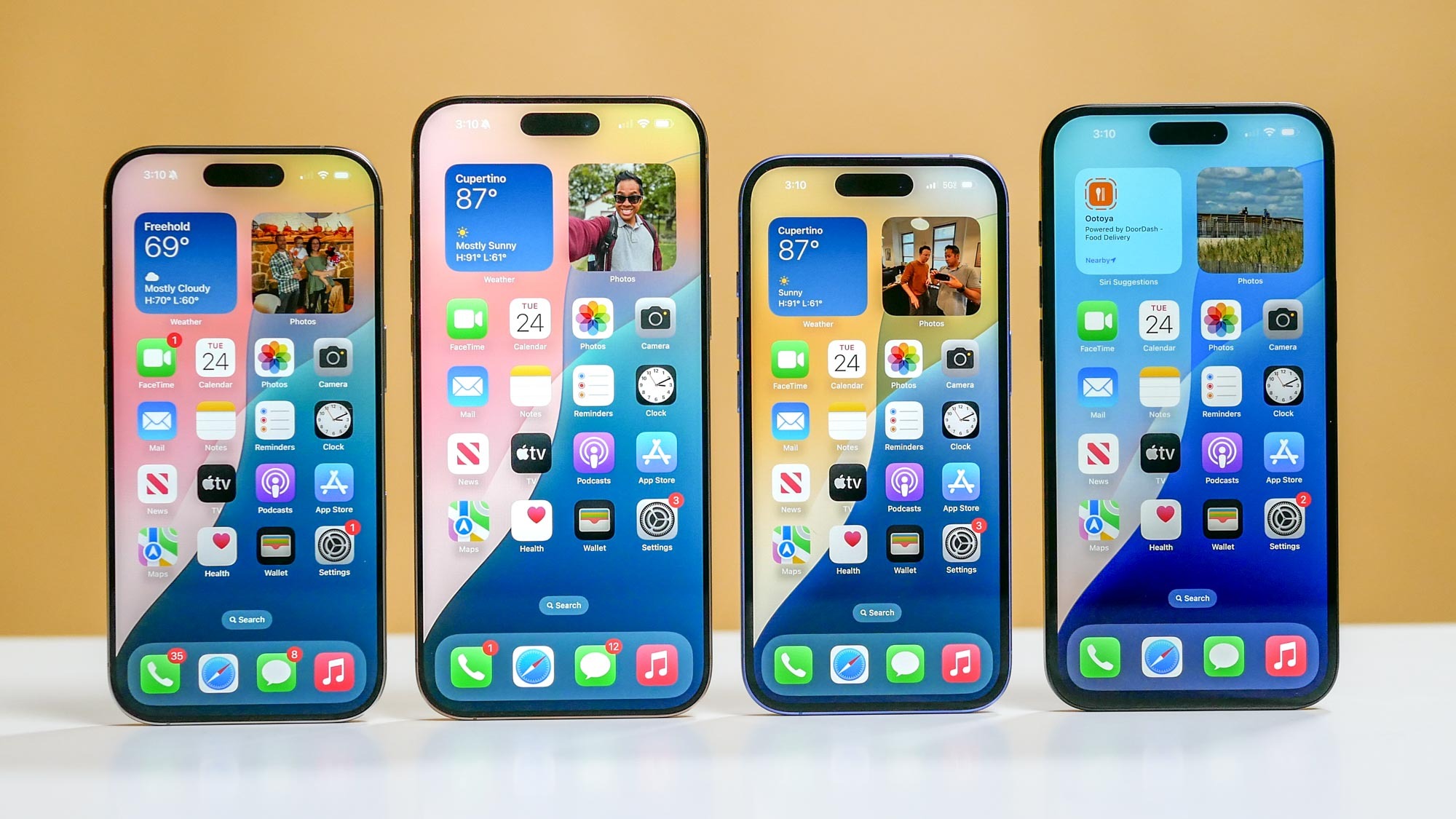
From top to bottom, the new iPhone 16 lineup contains a bunch of improvements — so many, in fact, that it's hard to distinguish the standard model from some of Apple's more premium handsets.
Yes, the iPhone 16 Pro and iPhone 16 Pro Max see their share of new features. But the standard model gets some attention from Apple, too. The end result is multiple iPhone models landing on our best phones list, topping some of the best Android phones we've tested in the past year.
But which of these four different models is the best iPhone for your needs? To find out, let's compare each model — the iPhone 16, the iPhone 16 Plus and both iPhone 16 Pro offerings — going through their specs, weighing their pros and cons and sharing our experiences from testing and reviewing these new Apple handsets.
Here's how an iPhone 16 vs. iPhone 16 Plus vs. iPhone 16 Pro vs. iPhone 16 Pro Max comparison shakes out.
iPhone 16 vs iPhone 16 Plus vs iPhone 16 Pro vs iPhone Pro Max: Specifications
The iPhone 16 and iPhone 16 Plus are basically the same phone, with the main differences coming down to screen size and battery size. Otherwise, your iPhone 16 vs. iPhone 16 Plus experience will be pretty much the same.
Similarly, the iPhone 16 Pro and iPhone 16 Pro Max share plenty of features in common, with screen size and battery size the primary differentiators. That's a change from last year's iPhone 15 Pro lineup, when the iPhone 15 Pro Max came equipped with a more powerful telephoto camera.
For a closer comparison of the two current Pro models, we've got an iPhone 16 Pro vs. iPhone 16 Pro Max face-off.
For additional comparisons of individual models, check out our iPhone 16 vs. iPhone 16 Pro head-to-head.
iPhone 16 vs iPhone 16 Plus vs iPhone 16 Pro vs iPhone Pro Max:Price
After a $100 price hike for the iPhone 15 Pro Max a year ago, Apple kept prices the same, with the entire iPhone 16 lineup keeping the starting prices of their iPhone 15 equivalents.
To that end, the standard iPhone 16 starts at $799 for the 128GB model. From there we go up in $100 increments with the iPhone 16 Plus at $899 and the iPhone 16 Pro at $999. The iPhone 16 Pro Max features double the storage in its base model with 256GB; it also starts at $1,199.
To upgrade from a 128GB iPhone to a 256GB, tack on another $100 to the price of the base model, regardless of which phone you're looking at. The 512GB variant costs $300 more than the base models of the iPhone 16, iPhone 16 Plus and iPhone 16 Pro; you'll pay $1,399 for a 512GB iPhone 16 Pro Max.
Both the Pro phones offer a 1TB version. That costs $1,499 for the iPhone 16 Pro and $1,599 for the iPhone 16 Pro Max.
Check out our round-up of the best iPhone 16 deals to see what you can save on each model.
iPhone 16 vs iPhone 16 Plus vs iPhone 16 Pro vs iPhone Pro Max: Design
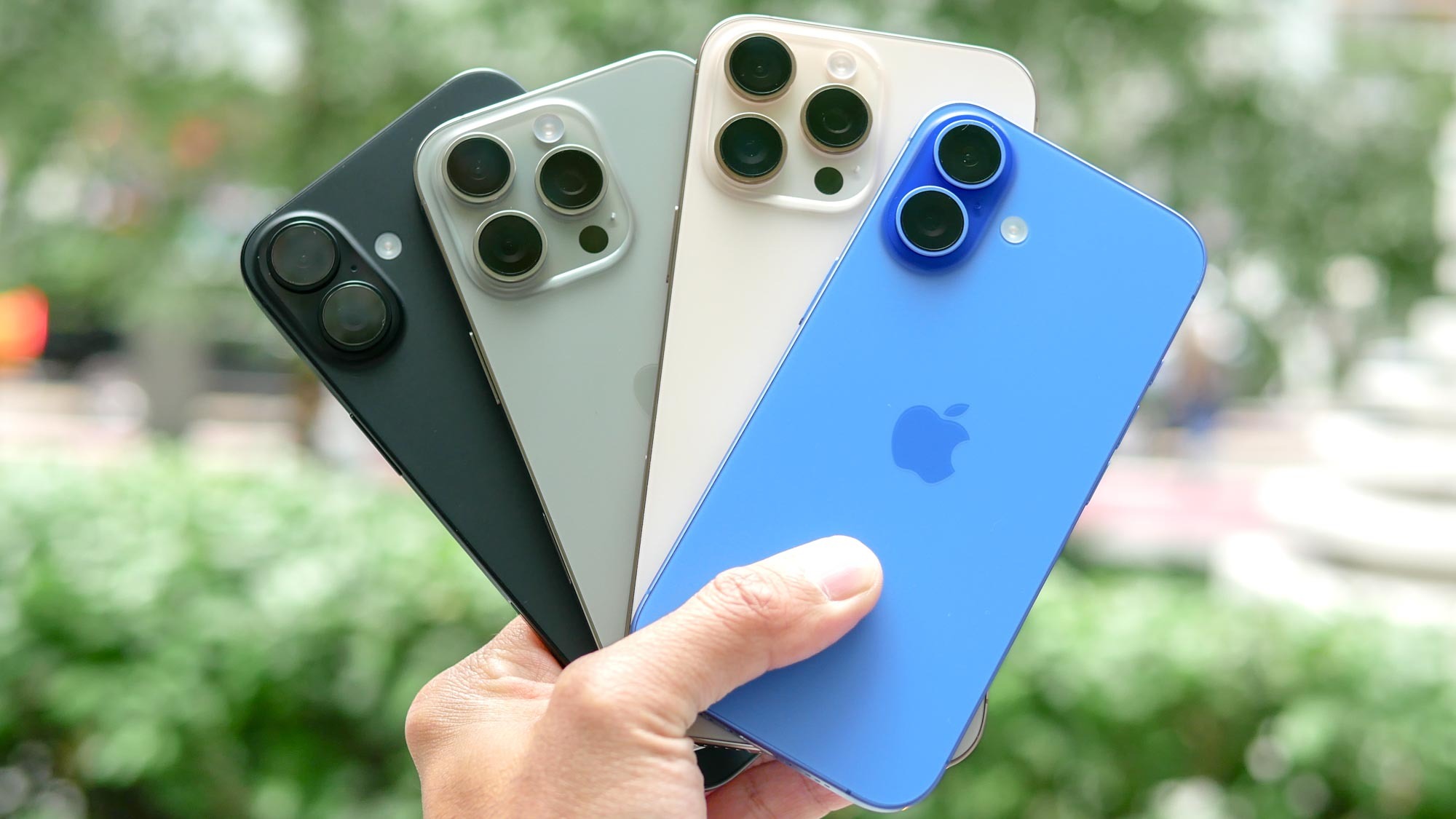
The iPhone 16 Pro models are bigger than previous Pro editions to accommodate thier larger screens. (More on that in the Display section of this iPhone 16 face-off.) As before, the iPhone 16 Pro models also use titanium frames while the standard iPhone and Plus version turn to aerospace-grade aluminum. The difference in material should make the Pro models more durable.
All four new iPhones get the latest version of Apple's Ceramic Shield glass. That's supposed to be 50% tougher than the previous iteration, though we'd still recommend additional protection, such as the best iPhone 16 cases (or the best iPhone 16 Pro cases, if that's the model you pick).
All four phones feature the new Camera Control button, making it easier to launch the Camera app and start taking pictures. The Camera Control button also lets you switch models and zoom in on a subject — the latter capability being more useful on the Pro models with their dedicated telephoto lens. The iPhone 16 and 16 Plus adopt the Action button first introduced with the iPhone 15 Pro.
The four iPhone 16 models continue to offer a USB-C port for charging. As before, the Pro models can support faster USB 3 connectivity with data speeds at up to 10GB/s.
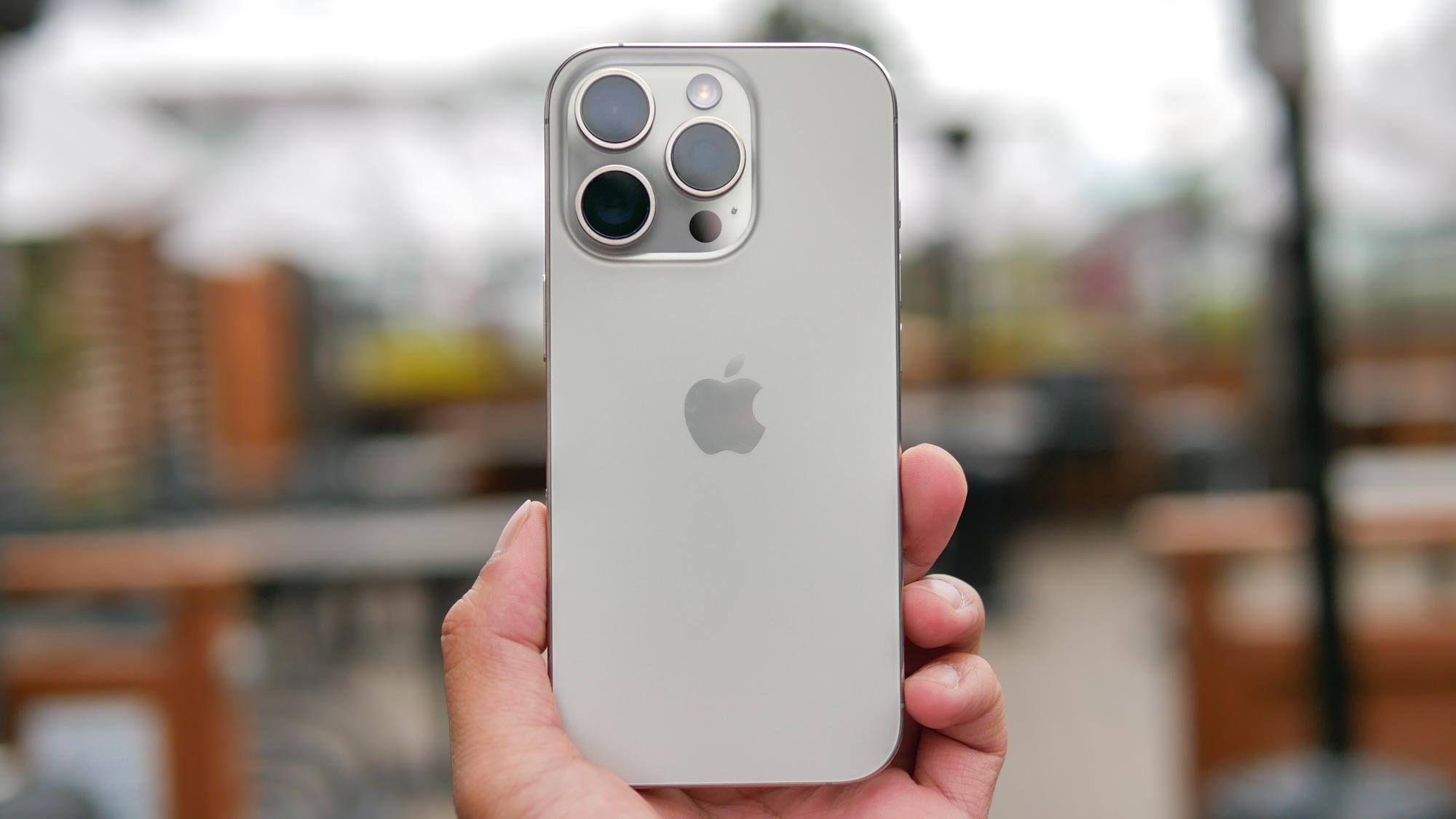
As before, Apple splits color options between the standard iPhone and the Pro models. For a more muted, metallic experience the Pro models come in White, Black and Natural Titanium. The most popular color appears to be the new Desert titanium, sort of a rosy gold.
However, if you prefer brighter, more friendly tones than the standard and Plus models have you covered with Ultramarine (light blue), teal, pink, white and black offerings.
iPhone 16 vs iPhone 16 Plus vs iPhone 16 Pro vs iPhone Pro Max: Display
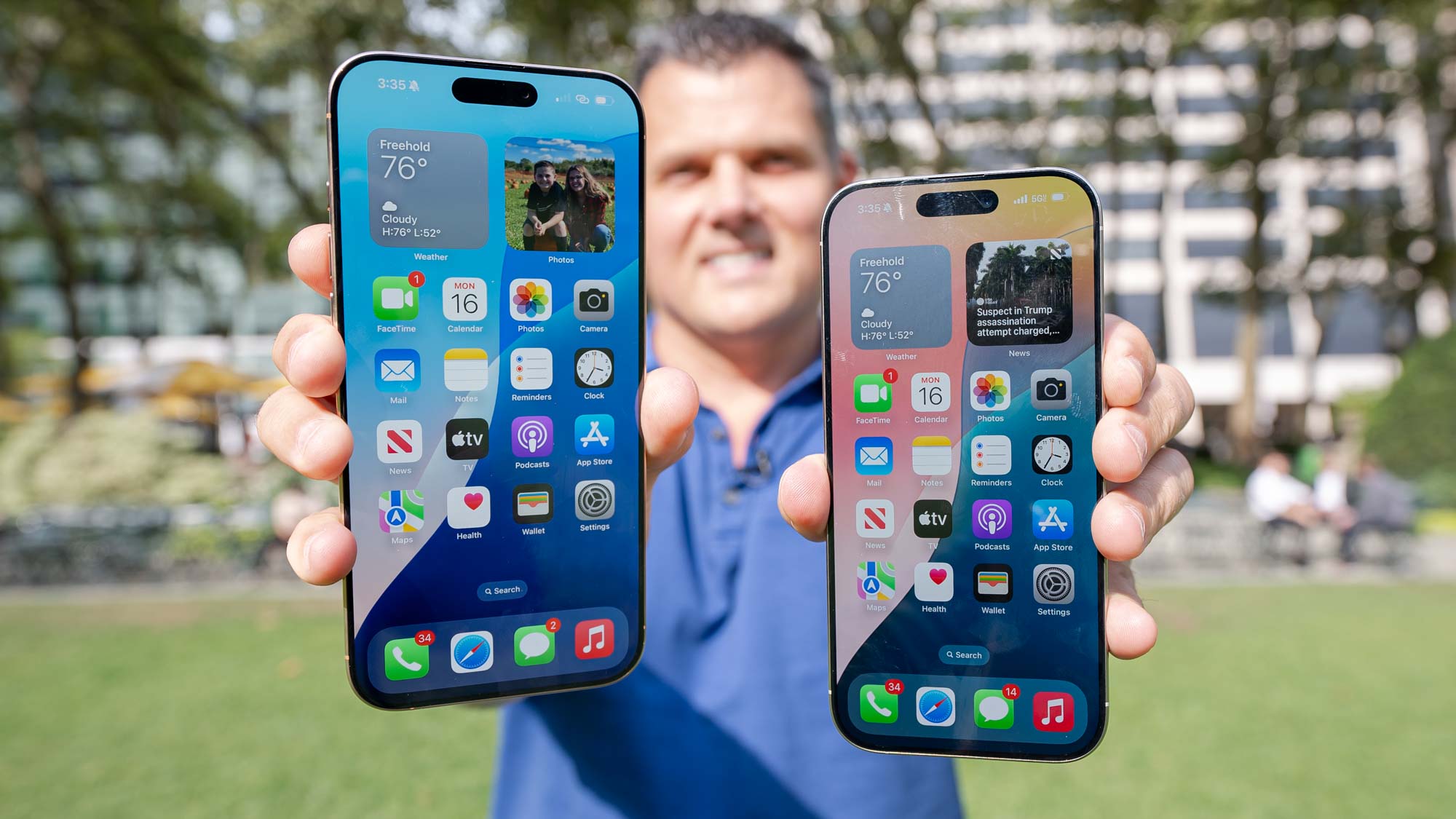
The biggest change to displays can be found on the iPhone 16 Pro models, with the both the standard Pro and Pro Max benefitting from thinner bezels and bigger screens. Specifically, the iPhone 16 Pro now has a 6.1-inch panel, while the iPhone 16 Pro Max features the biggest display ever on an iPhone at 6.9 inches.
The iPhone 16 and iPhone 16 Plus retain the sizes of their predecessors, measuring 6.1 and 6.7 inches, respectively.
The extra screen space on the Pro models gives you more real estate to work with when running productivity apps, streaming videos or gaming. But in the case of the iPhone 16 Pro Max, it does make for a larger phone that's difficult to use with one hand.
A key difference in iPhone displays remains for the iPhone 16 family, as the iPhone 16 and iPhone 16 Plus continue to offer 60Hz refresh rates. The displays on the Pro models can adapt up to 120Hz for smoother screening and more immersive gaming. Playing games that support faster refresh rates can be quite a different experience on the iPhone 16 than it is on the iPhone 16 Pro.
Brightness ratings haven't changed with the new iPhone 16 models. Each phone claims the same 1,600 nits of peak brightness and 2,000 nits in outdoor lighting as the equivalent iPhone 15 versions.
In fact, test results for the iPhone 16 displays proved to be pretty even across the board. All four phones capture the same percentage of the sRGB and DCI-P3 color spectrums, with very similar Delta-E ratings for color accuracy. (The iPhone 16 Pro is the most accurate of these models.) We measured brightness peaks of 1,348 nits (the iPhone 16) to 1,553 (iPhone 16 Pro), with all four phones visible in sunlight.
iPhone 16 vs iPhone 16 Plus vs iPhone 16 Pro vs iPhone Pro Max: Cameras
We've already talked about the Camera Control button that's standard on all four models. In our testing, we found it takes some getting used how much pressure to use when operating the button, and our reviewers are still learning what each swipe and press can do. But the ability to quickly switch between modes makes Camera Control a worthwhile addition.
Other camera changes tend to favor the Pro models. Both the iPhone 16 Pro and iPhone 16 Pro Max get a bigger 48MP sensor for their ultrawide camera, and the main camera has a faster shutter than before. The iPhone 16 Pro now features the same tetraprism telephoto lens as the Pro Max, so both models can support 5x zooms.
Apple limited the hardware changes to the ultrawide camera on the iPhone 16 and iPhone 16 Plus. That lens lets in more light for better image quality than before. The ultrawide lens on those two phones also has a new macro mode that really impressed in our testing.
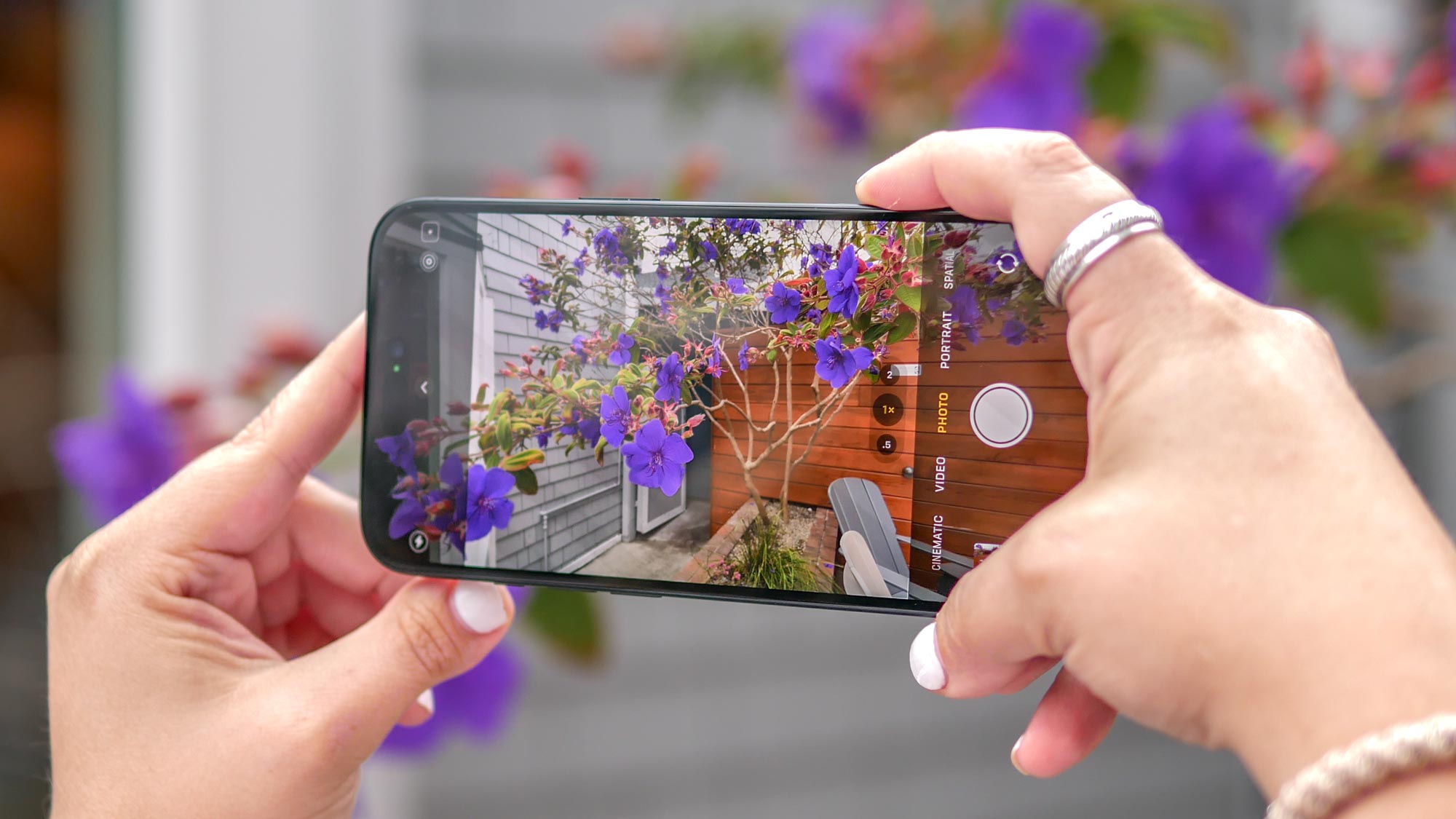
A change to the layout of the cameras in the rear array for the iPhone 16 and iPhone 16 Plus opens up a new feature for those phones. Because the main and ultrawide lenses are now stacked vertically, you can capture spatial photos and video from an iPhone 16. Previously that capability was limited to the Pro models.
The iPhone 16 Pro models get a boost in video recording with increased video capture 4K at 120 fps. 4K video is capped at 60 fps on the iPhone 16. All four models get four microphones to isolate sounds in audio recording but the Pro version does get "studio-quality" mics.
Because of those video capture features and the dedicated telephoto lens, we rate the iPhone 16 Pro as the best camera phone you can buy. But the iPhone 16 and iPhone 16 Plus also take high-quality photos, especially for phones in their price range.
iPhone 16 vs iPhone 16 Plus vs iPhone 16 Pro vs iPhone Pro Max: Performance
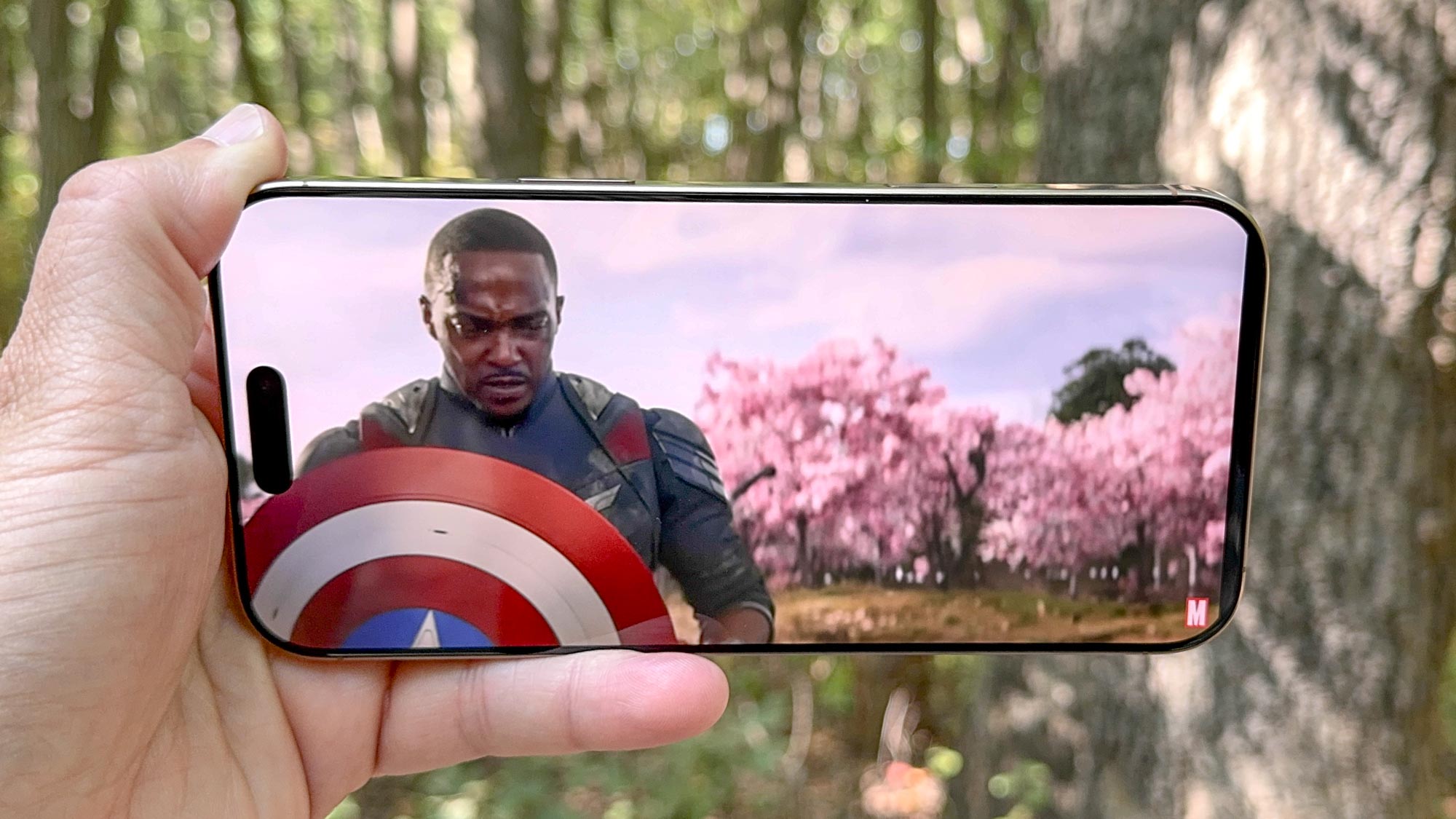
For the iPhone 14 and iPhone 15, Apple used different chipsets in its standard and Pro handsets. That's changed with the iPhone 16, as all four phones feature some version of the A18 system-on-chip.
The iPhone 16 and iPhone 16 Plus run on A18 silicon, which delivers dramatic improvement over the A16 Bionic that the iPhone 15 used. Meanwhile, the iPhone 16 Pro phones turn to the A18 Pro, which gets an extra core in its GPU. (That's six cores for the A18 Pro compared to five in the standard A18.) Otherwise, the A18 chipsets have the same 6-core CPU and 16-core Neural Engine for handling features that draw on artificial intelligence.
In our testing, all the iPhone 16 models produced similar Geekbench 6 single-core scores, though the Pro versions showed a bit more muscle in the multicore test. Our Adobe Premiere Rush test, in which we have phones transcode a video clip, also showed a slight advantage for the iPhone 16 Pro and Pro Max. Those phones completed the task 1.5 seconds faster than the standard iPhone.
It's graphics testing where you really notice the difference between the standard and pro models, with the iPhone 16 Pro posting much higher frames-per-second results in the 3DMark Wild Life Unlimited test. That's a compliment to the extra graphics core, we'd assume.
The bottom line: you'll get very strong performance from the iPhone 16 and iPhone 16 Plus. But it's the iPhone 16 Pro models you'll want to turn to for the best performance from one of Apple's devices.
iPhone 16 vs iPhone 16 Plus vs iPhone 16 Pro vs iPhone Pro Max: Battery life
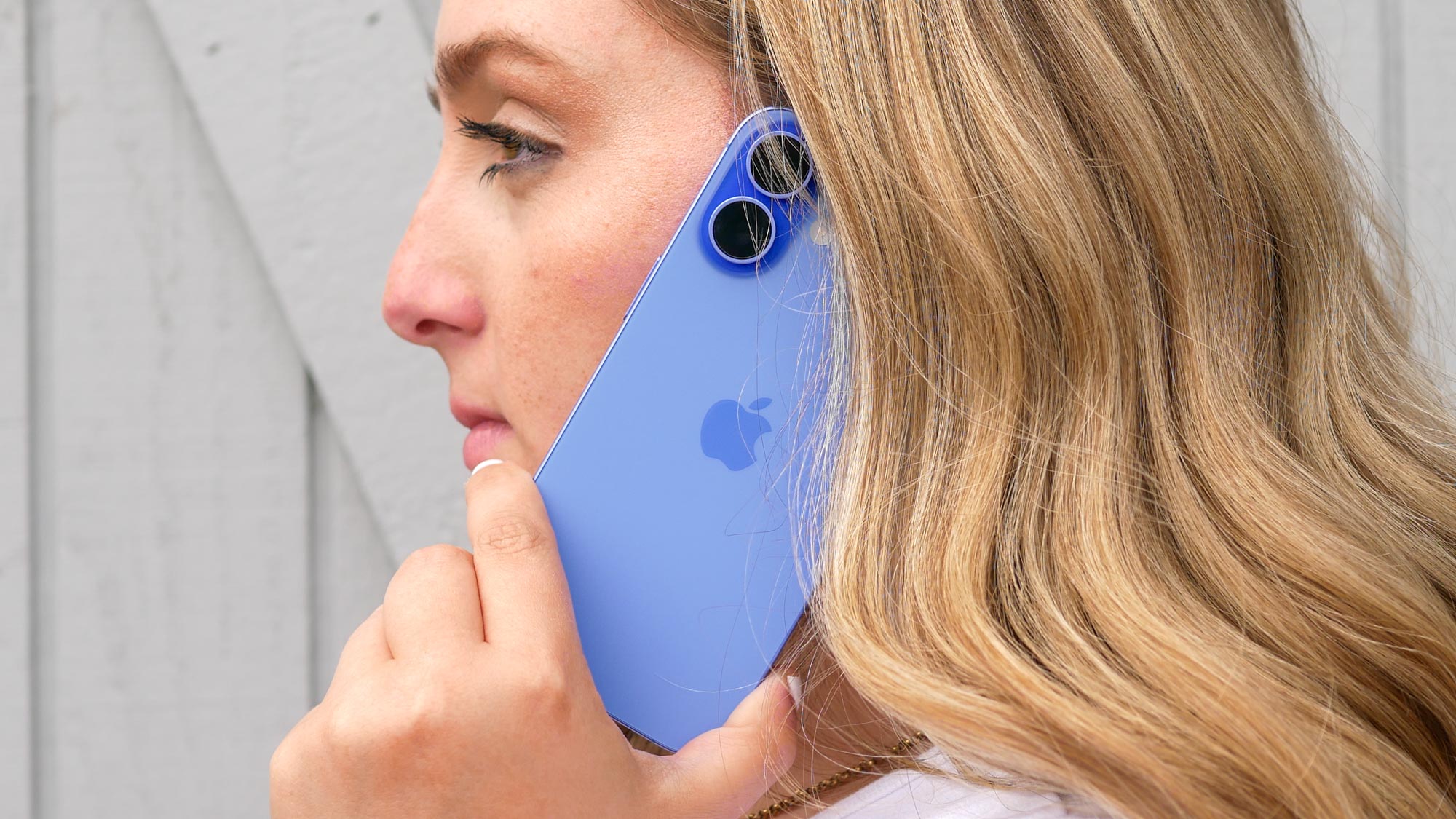
We don't officially know how big the batteries are in the iPhone 16 models — just that Apple says they're bigger than power packs used by the iPhone 15. Fortunately, between regulatory filings and iPhone 16 teardowns, we can get a sense of the unofficial battery sizes. As you'd expect, the iPhone 16 Plus and iPhone 16 Pro Max feature heftier cells owing to their larger size.
Whether it's the increased battery size or the more efficient A18 silicon, all four iPhone 16 models saw better battery life in our testing than their iPhone 15 counterparts. In some cases, the gains proved quite extraordinary.
The iPhone 16 Pro Max has the best battery life of any iPhone we've ever tested, lasting more than 18 hours on our test in which phones surf the web over cellular until they run out of power. That places the Pro Max on our best phone battery life list, where it holds down third place as of this writing.
The iPhone 16 Plus lands on that long-lasting phone list, too, with a time that's just shy of 16.5 hours. As for the more compact models, the iPhone 16 Pro improved its longevity by 4 hours over the iPhone 15 Pro, lasing 14 hours and 7 minutes.
The iPhone 16 may have the shortest battery life of any new iPhone, but short is relative here. At 12 hours and 43 minutes, the iPhone 16's result is still nearly 2 hours better than its predecessor.
Charging speeds are roughly equal on all four iPhone 16 models. When we charged the phones with a wired connection, each one managed to get 55% to 57% full after 30 minutes.
iPhone 16 vs iPhone 16 Plus vs iPhone 16 Pro vs iPhone Pro Max: Software
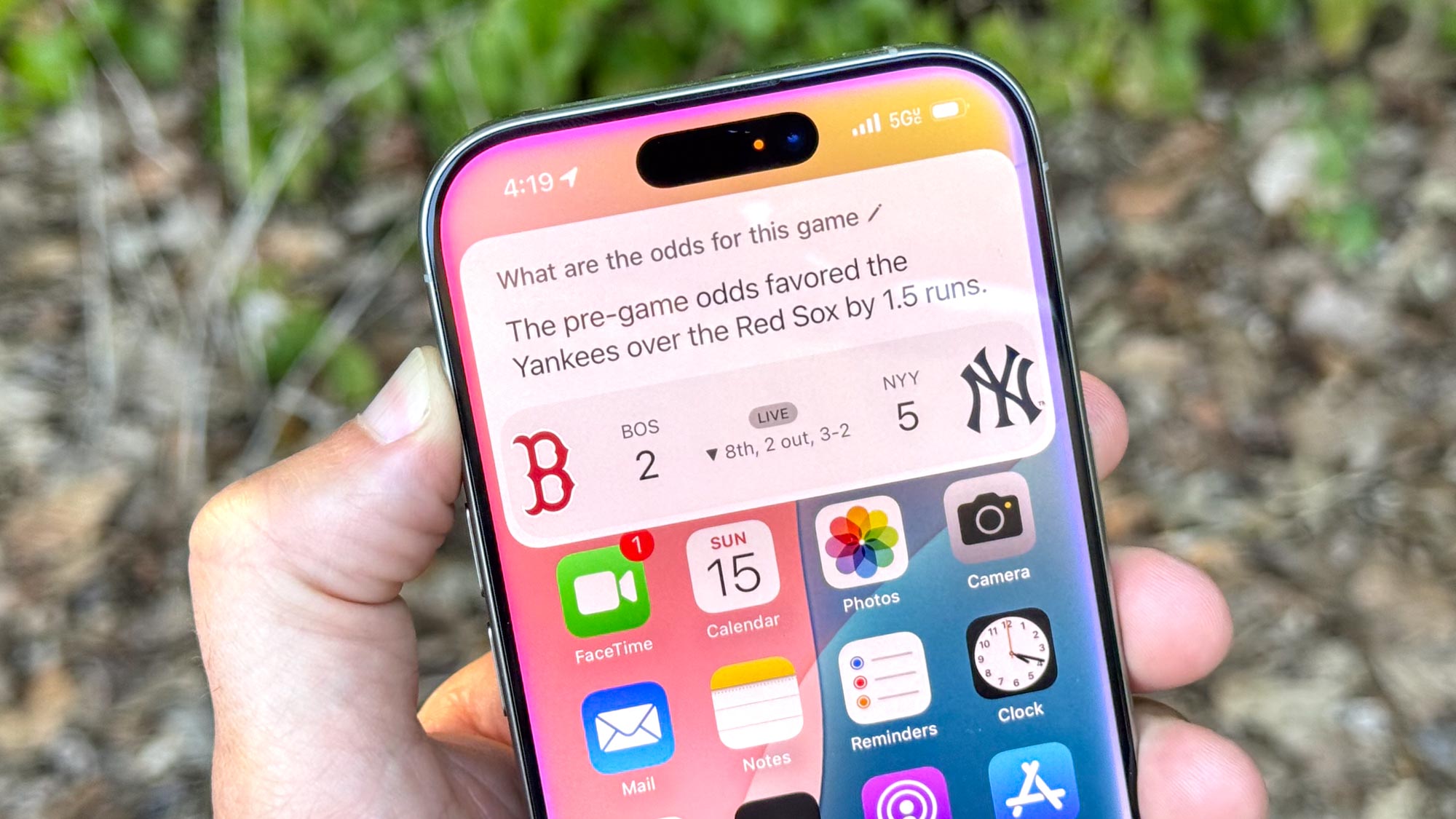
There's nothing separating the iPhone 16 models on the software front. All four phones ship with iOS 18 installed, and all four will be capable of supporting the same Apple Intelligence features when those AI capabilities debut with the arrival of iOS 18.1 in October. (You can try a public beta of iOS 18.1 right now if you want an early peek at the writing tools, Memory Movies feature and revamped Siri that will be part of Apple Intelligence.)
That's a mark in the favor of the less expensive iPhone 16 models. Even if you opt for an iPhone 16, you're getting the same Apple Intelligence features you would find on an iPhone 16 Pro, but you're spending hundreds of dollars less on your phone.
iPhone 16 vs iPhone 16 Plus vs iPhone 16 Pro vs iPhone Pro Max: Outlook
Your decision on which iPhone to buy will depend on what you're looking for in a phone. Fortunately, the four new models offer enough improvements so that there's something for everyone with each iPhone.
While the Pro iPhones deliver better graphics performance — and offer the 120Hz displays that take advantage of graphic-rich games — you'll get comparable performance no matter which iPhone you buy. you'll reap the benefits of Apple Intelligence on every iPhone 16 model as well.
The larger iPhones — the Plus and the Pro Max — have the benefit of larger screens (though some may find the Pro Max screen to be almost too big). That also means more space for batteries, so it's no surprise that the iPhone 16 Plus and iPhone 16 Pro Max last the longest on a charge.
That said, the iPhone 16 and iPhone 16 Pro also outperform the average smartphone when it comes to battery life. So if you prefer more compact phones, you can still expect to last the full day on a charge.
It's cameras where the iPhone 16 Pro models enjoy the biggest edge. Not only do they have a dedicated telephoto lens, they also have more extensive video features and better microphones. You can approximate a 2x optical zoom on the iPhone 16 and iPhone 16 Plus, but anything beyond that won't match what the zoom lens on the iPhone 16 Pro can capture.
In the end, screen size, camera and price will likely be the biggest factors in determining which iPhone you should get. Figure out what you're looking for there, and your iPhone 16 purchase becomes a lot easier.







